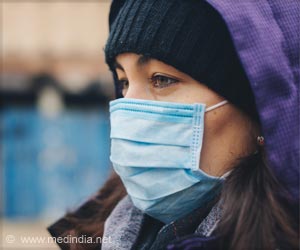1. Is the U.S. prepared for anthrax attacks?
Generally, no. An anthrax attack can occur very quietly without any bombs going off or any observable "clouds" being present. Our abilities to detect anthrax rapidly are very limited at present, so the first sign that an attack occurred could be thousands of people rushing to the hospital after a few days of exposure. Most states rate biological attacks as one of their weakest preparedness areas.
2. Why should we worry about anthrax attacks?
Many are concerned that U.S. based terrorists with ties to Iraq might try to unleash a biological attack against the U.S. population in response to any major U.S. anti-terrorism initiative or military actions.
3. How credible is the threat?
This is an unknown. We know that Iraq has hidden and lied about much of its biological warfare program. We do know that Iraq has claimed to have produced, and subsequently destroyed (so it says), roughly 9,000 liters of anthrax.
In addition, it has admitted testing anthrax and other agents as part of its biowarfare program. As a result of this and other perceived threats, former Secretary of Defense Cohen decided to vaccinate all active duty and reserve personnel against anthrax.
He shifted $500 million to new chemical and biological preparedness programs. Former President Clinton also added roughly $10 billion to the budget (in January 1999) into preparing for weapons of mass destruction terrorism – largely to help mitigate biowarfare attacks.
The bottom line is that Iraq has the technical expertise and demonstrated capability to support anthrax terrorism. Whether it or other terrorist organizations have successfully placed (or attempted to place) terrorists in the U.S. with anthrax is unknown – or at least unknown to the American public.
Many other countries have known or suspected biological warfare programs. Information and expertise from Russia's extensive biowarfare programs are likely to have leaked out to several other nations and terrorist groups. Anthrax weapons can be produced that can have the same killing capability as nuclear weapons for a fraction of the cost and expertise.
4. How lethal is anthrax?
According to the late Dr. Chester of Oak Ridge National Laboratory, cultured anthrax has roughly 2 x 105 lethal doses per gram. Anthrax in a slurry has roughly 107 lethal doses per gram. Powdered Anthrax has roughly 108 lethal doses per gram.
Former Secretary of Defense Cohen illustrated this point on TV by saying that a five-pound bag of anthrax, if properly dispersed, could kill perhaps half of the population of Washington, D.C.
Dr. Harold Strunk, who retired from the U.S. military and has extensive experience with anthrax, stated that a sugar cube quantity of anthrax could theoretically kill 100 million people. He pointed out that in reality, the number of people potentially killed by this amount of anthrax is much less because of the problems of dispersal within a population.
5. How would an anthrax attack occur?
According to the late Dr. Chester, the best method of spreading lethal anthrax is through spraying the spores into the wind, where it is subsequently inhaled and begins to multiply. Dr. Chester, while at Oak Ridge National Labs, looked at many anthrax attack scenarios, which resulted, in part, with the following estimations:
Scenario 1: A single-operator terrorist with a truck-mounted 55-gallon drum of anthrax and sprayer could cause tens of thousands of deaths within a city.
Scenario 2: A sophisticated and well-trained technical terrorist group with four medium-sized planes (DC-3 size) were shown to potentially kill 35 percent of the U.S. population with one night flight spraying anthrax over key population centers.
6. Some experts say anthrax is difficult to disperse through air
and sunlight. Is this true?
Presumably the terrorists would be trained on what the best weather conditions are for dispersing anthrax spores and how to effectively produce an aerosol laden with anthrax spores. According to experts, this would typically be done at night or on an overcast day with a gentle breeze so that the sun would not kill off the spores before they are inhaled. Terrorists can certainly wait for the right weather conditions to exist. According to studies performed by the Oak Ridge Labs and the U.S. Congressional Office of Technology Assessment, a well-executed attack can kill thousands to many millions.
7. How vulnerable is the food supply to anthrax?
Anthrax spores can fall upon food in either a dedicated attack on the food supply or as a secondary effect of an airborne release. If ingested in a sufficient dose, then an intestinal form of anthrax can occur that can be lethal for somewhere between 25 percent and 60 percent of those infected - if it is conventional anthrax for which we have clinical data resulting from the few cases where people ate infected meat. However, if the antibiotic supplies are limited, or a more drug-resistant strain is used, then a higher percentage of deaths can be expected.
8. What should be done at the governmental level?
Educate the public on the threat and how to counter it. This should include candid (but sanitized) information on any known attempted threats that have occurred in the past. The public deserves to know what is fact and what is fiction with the many rumors that have spread. (For example, USA Today and other news outlets reported a few years ago that there were several attempts by terrorists with biological warfare agents from Iraq who were successfully thwarted as they tried to enter our country – and some news sources said that some actually did enter)
Public education should also include how to prepare in advance to limit your exposure during any future biowarfare attack, as well as instructing medical personnel on how to treat this disease (see the USPDI website for some practical recommendations).
Learn more about the Russian and other strains of anthrax and develop new vaccines and antibiotics as required. Research on new non-drug-based antibiotics, such as the ASAP Solution being studied at BYU, should be accelerated. Expand the current vaccination program for people who live in high-threat areas or in high-risk professions. For example, a vaccination program similar to what is required of the military could be offered on a voluntary basis to medical personnel and first responders to blast/chem/bio/radiation scenes.
Encourage Congress to increase the vaccine production capabilities in the U.S. (currently only one company in the U.S. produces the vaccine) so that concerned citizens can be vaccinated, not just U.S. military personnel, and to allow for rapid mass immunizations should a large terrorist biowarfare attack occur.
Continue research on rapid detection devices for anthrax and other biological weapons and distribute these for real-time, 24-hour monitoring of major urban areas.
Increase the quantity of stockpiled antibiotics as well as the number of dispersal locations to respond to anthrax and other biowarfare attacks. Hours of delay in receiving antibiotics can translate to thousands or millions of additional deaths. Antibiotic stockpiles should be readily available to the medical community without having to wait 12 or more hours. Low-cost disposable respirator masks and latex gloves should also be stockpiled, as the current supplies (especially of respirators) could be quickly depleted and lead to many unnecessary deaths and prolonged social disruption.
Train and immunize emergency services personnel on how to identify/treat/triage biowarfare victims and how to limit the further spread of anthrax and other biological agents.
Upgrade intelligence, customs and law enforcement capabilities to thwart potential biological terrorists without infringing on citizens' rights.
|
What can the average man do to be prepared?
Here are some practical steps to consider:
There is an extremely low risk of biological attack if you live far outside a major urban area. Hence, if you live tens of miles outside a major city, you probably do not need to do much to be prepared other than have food, water, power, and medical supplies, etc., stored up in case of long infrastructure outages due to biological attacks. Some low-cost medical supplies, such as disposable HEPA or N95 respirators and some latex gloves, would be needed if a highly infectious bio-warfare agent was used.
If you live in or near a large urban area, you should learn how to make bio-safe rooms at your home and place of business, if you learn of an attack that is imminent or has occurred in your area.
Go inside your home or business and close your windows. Prepare a bio-safe room and don a HEPA or N95-style respirator mask, if available.
Monitor the radio or TV and seek medical advice immediately. The USDPI website provides information resources on what the military and others recommend for anthrax and other biowarfare agents. If there is a known attack and you have previously been recommended to do so by your doctor, begin taking a safe dose of antibiotics. Be careful, because there is some wrong information out there produced by popular so-called biowarfare experts. This literature can be dangerous when it comes to dosages, especially as it pertains to mapping vet dosages of animals to humans.
If you really believe you've been exposed, you need to seek professional advice and antibiotic treatments immediately. If you wait until clear symptoms appear (normally after one to six days after exposure), in the case of anthrax, it will probably be too late to save yourself. However, be careful not to overreact to false warnings or rumors of attacks.
Dead animals or people who have died from anthrax should not be cut into but buried quickly and deeply or cremated to reduce spore spread, which occurs with exposure to air. Those treating suspected anthrax patients should wash their hands frequently and take preventive antibiotics [though sick human to well human transmission is unlikely].
Try to obtain vaccinations for anthrax if really concerned.
(Note: These are not currently available to the general public, only the military and certain other fields, like veterinarians).
You can write to your congressman to see if Congress can work to make this an option to the average American. There are a lot of issues surrounding the effectiveness of the vaccination program. One argument is that if an attack occurs with a genetically engineered special strain of anthrax (as with the Russian versions), the vaccine will not help much. The counter argument is that in many scenarios, especially one with a less sophisticated adversary, the vaccine may prove helpful in reducing your risk.


















